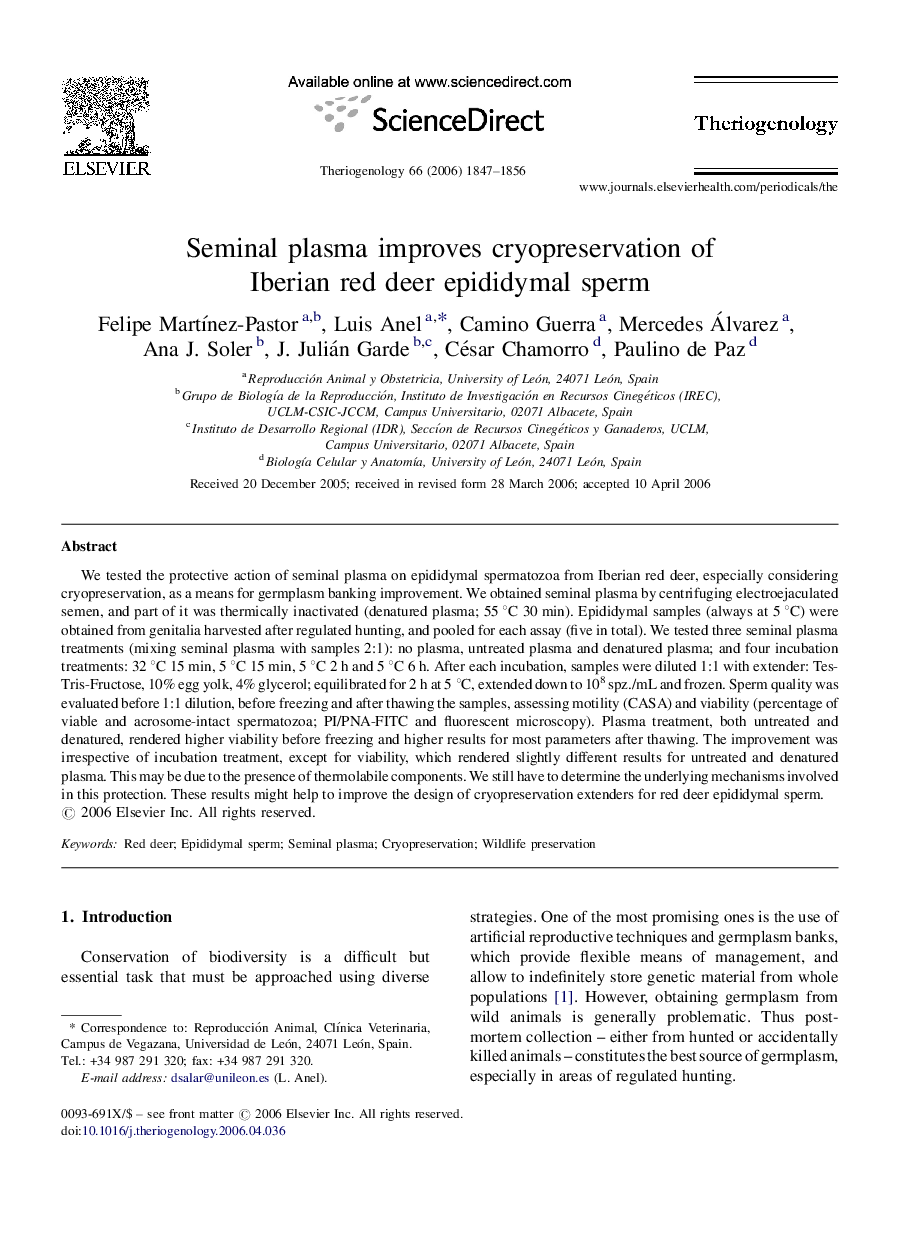| Article ID | Journal | Published Year | Pages | File Type |
|---|---|---|---|---|
| 2096613 | Theriogenology | 2006 | 10 Pages |
We tested the protective action of seminal plasma on epididymal spermatozoa from Iberian red deer, especially considering cryopreservation, as a means for germplasm banking improvement. We obtained seminal plasma by centrifuging electroejaculated semen, and part of it was thermically inactivated (denatured plasma; 55 °C 30 min). Epididymal samples (always at 5 °C) were obtained from genitalia harvested after regulated hunting, and pooled for each assay (five in total). We tested three seminal plasma treatments (mixing seminal plasma with samples 2:1): no plasma, untreated plasma and denatured plasma; and four incubation treatments: 32 °C 15 min, 5 °C 15 min, 5 °C 2 h and 5 °C 6 h. After each incubation, samples were diluted 1:1 with extender: Tes-Tris-Fructose, 10% egg yolk, 4% glycerol; equilibrated for 2 h at 5 °C, extended down to 108 spz./mL and frozen. Sperm quality was evaluated before 1:1 dilution, before freezing and after thawing the samples, assessing motility (CASA) and viability (percentage of viable and acrosome-intact spermatozoa; PI/PNA-FITC and fluorescent microscopy). Plasma treatment, both untreated and denatured, rendered higher viability before freezing and higher results for most parameters after thawing. The improvement was irrespective of incubation treatment, except for viability, which rendered slightly different results for untreated and denatured plasma. This may be due to the presence of thermolabile components. We still have to determine the underlying mechanisms involved in this protection. These results might help to improve the design of cryopreservation extenders for red deer epididymal sperm.
